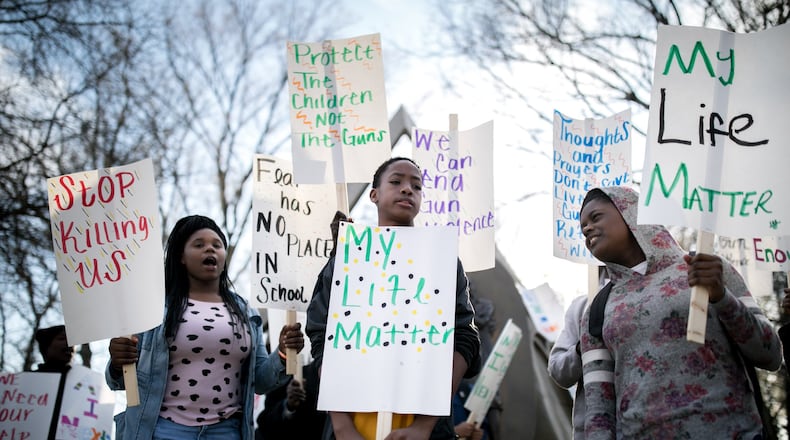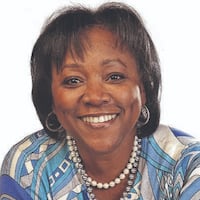It’s not surprising that two of us can look at the same thing and see two totally different realities.
It has everything to do with how our brain works and more precisely how we apply our life experiences to what we see and feel.
I thought about this as I read some study results last week about the Black Lives Matter movement and why there is such a wide divide between those who support the movement and those who don’t.
Those of us who believe police treatment of African-Americans is unfair are more likely to embrace the movement. Those who see the movement as a potential threat, however, don’t.
“What is striking is that the same factors that predict opposition to BLM, such as males, being politically conservative, or Republican, are similarly related to support for the death penalty and opposition to NFL anthem protests,” said Alex R. Piquero, a University of Texas at Dallas criminologist and one of the study’s authors. “There is a real racial divide when it comes to issues that are sympathetic to African-Americans in the United States.”
Piquero, one of the study’s authors, told me he’s long been interested in intersections of race, culture and crime. He’s studied both the public’s perception of the NFL anthem protests and reaction to Michael Vick’s conviction in a dog-fighting case and subsequent reinstatement by the NFL and believed the Black Lives Matter movement warranted the same scrutiny.
RELATED: Did Tamir Rice's life matter? Doesn't look like it
“I think that with many social issues — especially those that are at the intersection of race and ethnicity — our job as researchers is to not just describe what people feel but also try to understand the factors that relate to what they feel,” Piquero said. “This kind of descriptive work helps us start to understand where people are coming from and maybe where they are going.”
The study, “Red States and Black Lives,” found that those most opposed to the Black Lives Matter movement were men, conservative or Republican individuals, and supporters of the death penalty. African-Americans and individuals who perceive their local police to exhibit racial biases against blacks, however, are less likely to oppose BLM.
Credit: undefined
Credit: undefined
Men were 42 percent more likely to oppose the movement than women, and political conservatives were 257 percent more likely to oppose it than moderates or liberals. States with the highest levels of opposition included Oklahoma, Arkansas, Alabama and Minnesota.
RELATED: Yes, Zianna, it is a shame
What surprised Piquero about the findings was the clear demarcation seen with males, conservatives and Republicans who so strongly oppose Black Lives Matter.
“These same characteristics are associated with being more supportive of the death penalty and more opposed to NFL anthem protests, both of which have racial undertones,” he said.
This is clearly evident in the emails I receive when I write anything related to NFL protests or Black Lives Matter. Even when I concede the black community needs to deal with black-on-black crime, the reaction from white men is void of empathy.
“Sorry Grade,” one reader wrote, misspelling my name, “it is time you stopped pushing the myth that police dispassionately shoot blacks. It’s simply not true despite your ‘indisputable’ claim.”
Another wrote: “This odd relationship exists because the so-called Black leaders are unwilling to address any issue plaguing the Black community that they cannot blame on someone else …”
As one of the movement’s sympathizers — I worry about my black husband and brothers and nephews — I’m always struck by how often they like to use blacks’ high crime rates to explain away police brutality toward African-Americans but don’t think it’s strange that white men aren’t being killed at the same rates even though they commit the majority of mass killings.
It’s hard to believe, but we’ve had 307 mass shootings this year, including two recent ones in which more than 10 people were killed in each.
Credit: The Atlanta Journal-Constitution
Credit: The Atlanta Journal-Constitution
“There are high crime rates in some — but not all — black communities — but just as well, there are high crime rates in certain white communities — and in particular, the drug problems that we are starting to see in the United States are over-represented in white communities,” Piquero said. “Crime, drugs and violence sees no color.”
Recently a woman wrote to say she didn’t know why the black-on-black crime column touched her so.
“As an older (70) person of the Jewish faith, I am grieving with the rest of my fellow Jews about the Pittsburgh shooting,” she said. “… I can only imagine that you do, too, when perpetrators and/or victims are African-American. Everyone deserves to feel safe.”
And there you have it. We often don’t feel for other people until something similar happens to us.
I think it was Thoreau who said it’s not what you look at that matters, it’s what you see.
The Talmud put it this way: We don’t see the world as it is, we see it as we are.
When I step into the shoes of black mamas who’ve lost their sons, I see myself.
I don’t want to belabor the point, but black lives do matter and, no matter the details, they ought to matter to all of us.
Find Gracie on Facebook (www.facebook.com/graciestaplesajc/) and Twitter (@GStaples_AJC) or email her at gstaples@ajc.com.
About the Author






